This is a sort-of follow-up question from :Convert image to specific palette using PIL without dithering
I, too, want to create a script that can convert an image to a specific set of colors without dithering.
I have implemented the work-around "custom quantization" function given as the answer for the questions. Most of the scripts works well except for 1 big problem.
Light green color RGB(130,190,40) is replaced by a light brown color RGB(166, 141, 95). (see the light green on the top left of the mane.)
from PIL import Image
def customConvert(silf, palette, dither=False):
''' Convert an RGB or L mode image to use a given P image's palette.
PIL.Image.quantize() forces dither = 1.
This custom quantize function will force it to 0.
https://stackoverflow.com/questions/29433243/convert-image-to-specific-palette-using-pil-without-dithering
'''
silf.load()
# use palette from reference image made below
palette.load()
im = silf.im.convert("P", 0, palette.im)
# the 0 above means turn OFF dithering making solid colors
return silf._new(im)
palette = [
0,0,0,
0,0,255,
15,29,15,
26,141,52,
41,41,41,
65,105,225,
85,11,18,
128,0,128,
135,206,236,
144,238,144,
159,30,81,
165,42,42,
166,141,95,
169,169,169,
173,216,230,
211,211,211,
230,208,122,
245,245,220,
247,214,193,
255,0,0,
255,165,0,
255,192,203,
255,255,0,
255,255,255
] + [0,] * 232 * 3
# a palette image to use for quant
paletteImage = Image.new('P', (1, 1), 0)
paletteImage.putpalette(palette)
# open the source image
imageOrginal = Image.open('lion.png').convert('RGB')
# convert it using our palette image
imageCustomConvert = customConvert(imageOrginal, paletteImage, dither=False).convert('RGB')
CIE76 Delta-E:
Currently: RGB(130,190,40) --> RGB(166, 141, 95) = 57.5522
Expected: RGB(130,190,40) --> RGB(144,238,144) = 31.5623
Can someone explain if I wrote the code incorrectly or suggestions how to get it to work.



